On 16 January 2012, 300 researchers, policy makers, industry specialists, and NGO representatives from 36 nations gathered in Mexico City to launch the MAIZE and WHEAT CGIAR Research Program (CRP) meetings. In opening the proceedings, Pedro Brajcich Gallegos, representing INIFAP and SAGARPA, on behalf of the Government of Mexico, highlighted the importance of these two CRPs in light of the increasing occurrences of extreme weather due to climate change. Mexico is among the affected countries and Brajcich Gallegos pledged the support of the Mexican Government in achieving the goals set out by these two initiatives.

Led by CIMMYT and ICARDA, the WHEAT CRP is expected to deliver enough wheat for an additional 56 million consumers by 2020, and an additional 397 million by 2030. The MAIZE CRP, lead by CIMMYT and IITA, is focused on delivering enough maize to feed an additional 135 million consumers in 2020, and an additional 600 million by 2030. These goals are particularly pertinent given the recent predictions of a UN report, estimating a world population of 10 billion by 2080.
CIMMYT’s Director General, Thomas Lumpkin, delivered a joint presentation with Molly Jahn, Professor, Department of Agronomy and Genetics for the Center for Sustainability and the Global Environment at the University of Wisconsin-Madison. “This meeting is historic and significant,” declared Jahn, “These two CRPs are a significant development for agricultural research, and people all over the world are watching for the results,” she added.
Representing the Bill & Melinda Gates Foundation, Director of Agricultural Development Programs David Bergvinson delivered a presentation focusing on the increasing need for holistic and systems-based approaches to addressing future food security demands. “Never have so many been so dependent on so few for food,” he said, and went on to stress the need for investment by governments and aid agencies: “We’re all here to lift smallholder farmers out of poverty, and agriculture is the engine with which to do that.”
Marianne Bänziger, CIMMYT Deputy Director General for Research and Partnerships, urged researchers to focus on delivering results to the world’s poorest farmers: “Productivity is not just about yields, but what is actually happening in farmer’s fields,” she said. Bänziger also warned that the food riots of 2008 and 2010 would be repeated, and that it is the responsibility of the international scientific community and policy makers to stem food price increases and improve livelihoods for agricultural producers.
Over the subsequent four days, participants attended presentations and formed discussions and focus groups to identify research priorities and coordinate future work among themselves and with farmers. As expressed by seed producer María E. Rivas-Dávila: “I feel I have a role in the CRPs, because they are thinking at all levels, from researchers to farmers, so I am in the middle.”
Coming from such a wide range of institutions, participants had many different experiences to share. “I intended to bring my experience, but also to gather information, because we have not reached the end of the road,” said Argentinean Agronomist-Producer, Roberto Peiretti. “There is always a lot of opportunity to learn more and more, and I knew that this meeting was going to have such a broad base of worldwide participation, so I was extremely glad to be invited,” he added.
The closing session on Friday 20 January was chaired by Salvador Fernández Rivera, coordinator for research, innovation and partnerships, and agricultural research of Mexico’s National Institute of Forestry, Agriculture, and Livestock Research (INIFAP). Representatives from geographically- and organizationally- diverse partner entities shared impressions and suggestions. Maize breeder James Gethi, of the Kenya Agricultural Research Institute (KARI), said the type of planning that had been done was critical for better impact and for synergies: “We were all here to improve impact in the welfare of smallholder farmers. How can we achieve this with all the bright minds in the room?” He enjoined national organizations, international centers, seed companies, and other actors to share information and knowledge.
Marilia Nutti, biofortification coordinator in Brazil’s Agricultural Research Corporation, EMBRAPA, said teamwork is the only way. “We need to work with the private sector to speed progress…and with the international community, for sustainable technology.”
Kingstone Mashingaidze, maize scientist with South Africa’s Agricultural Research Council (ARC), warned that partners should not be left behind in the mastery and use of molecular tools. “I don’t think CIMMYT can afford to run alone with molecular breeding tools,” he said. “For national programs, the challenge is if you want to continue to be relevant, then you’d better change the way you do business.”
After the exciting and hectic week of meetings, one shared sentiment was that MAIZE and WHEAT represent precisely that: a chance for everyone to leave behind business as usual and take bold and intelligent action to energize agriculture and meet the global challenges of food security.
A special recognition to Laura Ruíz and the logistics team for their long hours and sleepless nights to make the event the success it was.
 A recent study co-authored by CIMMYT agronomist Iván Ortiz- Monasterio has demonstrated how temperatures greater than 34°C can significantly cut wheat yields. Using nine years of satellite data for wheat grown in northern India, the team showed how previous models had underestimated the effects of high temperatures on senescence and yield. The onset of senescence seriously limits grain filling, and senescence is hastened by high temperatures. In South Asia, if wheat is not sown early enough, the crop reaches grainfilling stage during pre-Monsoon hot spells. Existing models may have underestimated grain losses by as much as 50%, for some sowing dates. “This study shows how innovative research tools like remote sensing can provide important information in the area of agriculture and climate change,” said Ortiz-Monasterio.
A recent study co-authored by CIMMYT agronomist Iván Ortiz- Monasterio has demonstrated how temperatures greater than 34°C can significantly cut wheat yields. Using nine years of satellite data for wheat grown in northern India, the team showed how previous models had underestimated the effects of high temperatures on senescence and yield. The onset of senescence seriously limits grain filling, and senescence is hastened by high temperatures. In South Asia, if wheat is not sown early enough, the crop reaches grainfilling stage during pre-Monsoon hot spells. Existing models may have underestimated grain losses by as much as 50%, for some sowing dates. “This study shows how innovative research tools like remote sensing can provide important information in the area of agriculture and climate change,” said Ortiz-Monasterio.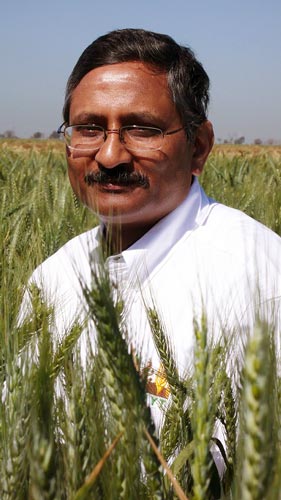 Innovative techniques in wheat breeding are necessary to meet the increasing population demand and overcome environmental challenges, said CIMMYT Wheat Breeder, Ravi Singh, at the annual meeting of the
Innovative techniques in wheat breeding are necessary to meet the increasing population demand and overcome environmental challenges, said CIMMYT Wheat Breeder, Ravi Singh, at the annual meeting of the 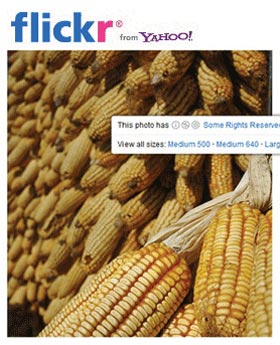 Many of us were celebrating love and friendship on 14 February 2012, and CIMMYT’s online image collection was no exception. Users around the world showed us how much they love CIMMYT’s photos, with the flickr site receiving its 200,000th view since the collection began. If you haven’t yet seen our fantastic photos, join in at:
Many of us were celebrating love and friendship on 14 February 2012, and CIMMYT’s online image collection was no exception. Users around the world showed us how much they love CIMMYT’s photos, with the flickr site receiving its 200,000th view since the collection began. If you haven’t yet seen our fantastic photos, join in at: 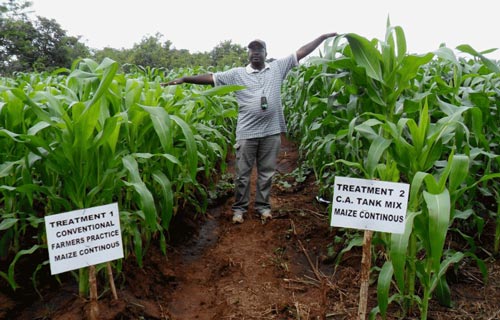 During 06-10 February 2012, a team of CIMMYT scientists travelled to six communities in Zambia’s Eastern Province to monitor progress on activities implemented under the Sustainable Intensification of Maize-Legume systems for the Eastern Province of Zambia (SIMLEZA) project, funded by USAID as part of Barack Obama’s “Feed the Future” initiative. The team was joined by national partners from governmental extension services, field coordinators from Total Land Care, Zambian researchers from Msekera Research Station, IITA, and CIP, and a group of farmers from Monze, in Zambia’s Southern Province. Journalists from two radio stations, one daily newspaper, and Zambian television covered the visit.
During 06-10 February 2012, a team of CIMMYT scientists travelled to six communities in Zambia’s Eastern Province to monitor progress on activities implemented under the Sustainable Intensification of Maize-Legume systems for the Eastern Province of Zambia (SIMLEZA) project, funded by USAID as part of Barack Obama’s “Feed the Future” initiative. The team was joined by national partners from governmental extension services, field coordinators from Total Land Care, Zambian researchers from Msekera Research Station, IITA, and CIP, and a group of farmers from Monze, in Zambia’s Southern Province. Journalists from two radio stations, one daily newspaper, and Zambian television covered the visit.
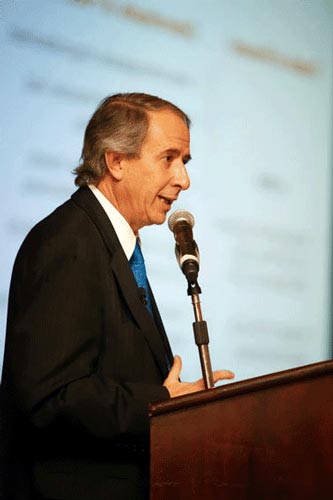 At the
At the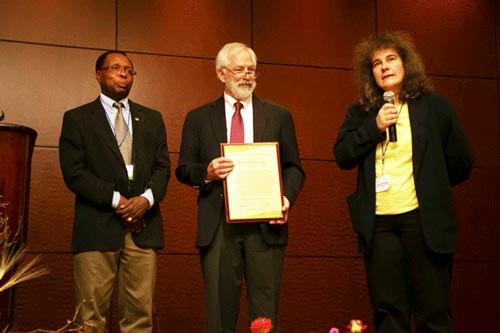 At the closing dinner of the MAIZE and WHEAT meetings on 20 January 2012, CIMMYT took the opportunity to say farewell to Wilfred Mwangi,
At the closing dinner of the MAIZE and WHEAT meetings on 20 January 2012, CIMMYT took the opportunity to say farewell to Wilfred Mwangi, 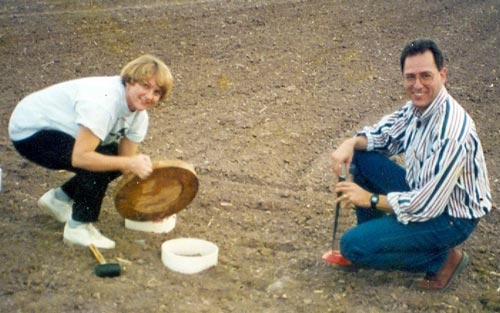 The Yaqui Valley is one of Mexico’s main bread baskets and supplies seeds and grain globally. It was the birthplace of the Green Revolution and, as the home of CIMMYT’s primary field station, Campo Experimental Norman E. Borlaug (CENEB), it has been a hub of agronomic research for decades, with a wealth of accumulated knowledge, field research, and survey data. However, the region is not without its problems. It faces environmental, resource, economic, and social challenges related to water resources, air and water pollution, policy changes, human health concerns, biodiversity conservation, and climate change.
The Yaqui Valley is one of Mexico’s main bread baskets and supplies seeds and grain globally. It was the birthplace of the Green Revolution and, as the home of CIMMYT’s primary field station, Campo Experimental Norman E. Borlaug (CENEB), it has been a hub of agronomic research for decades, with a wealth of accumulated knowledge, field research, and survey data. However, the region is not without its problems. It faces environmental, resource, economic, and social challenges related to water resources, air and water pollution, policy changes, human health concerns, biodiversity conservation, and climate change.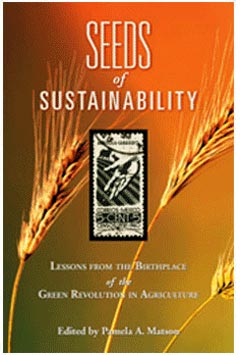 Seeds of Sustainability is the product of these 15 years of research, analysis, and evaluation in the Yaqui Valley. Edited by renowned scientist and Dean of the
Seeds of Sustainability is the product of these 15 years of research, analysis, and evaluation in the Yaqui Valley. Edited by renowned scientist and Dean of the 

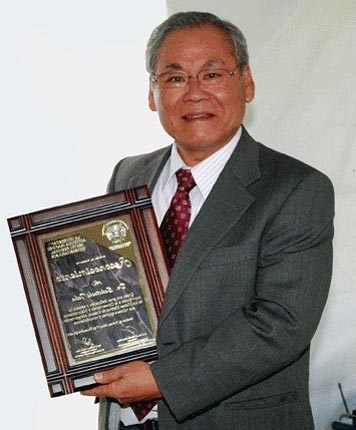 At El Batán on 20 December 2011, CIMMYT staff, family, and friends joined specialists from Mexican universities and national research programs, Second Secretary Shin Taniguchi of the Japanese Embassy in Mexico, and farmers in a gala farewell luncheon for the retiring head of maize genetic resources, Suketoshi Taba, after an illustrious 36-year career at CIMMYT in the study, conservation, and use of maize diversity.
At El Batán on 20 December 2011, CIMMYT staff, family, and friends joined specialists from Mexican universities and national research programs, Second Secretary Shin Taniguchi of the Japanese Embassy in Mexico, and farmers in a gala farewell luncheon for the retiring head of maize genetic resources, Suketoshi Taba, after an illustrious 36-year career at CIMMYT in the study, conservation, and use of maize diversity.